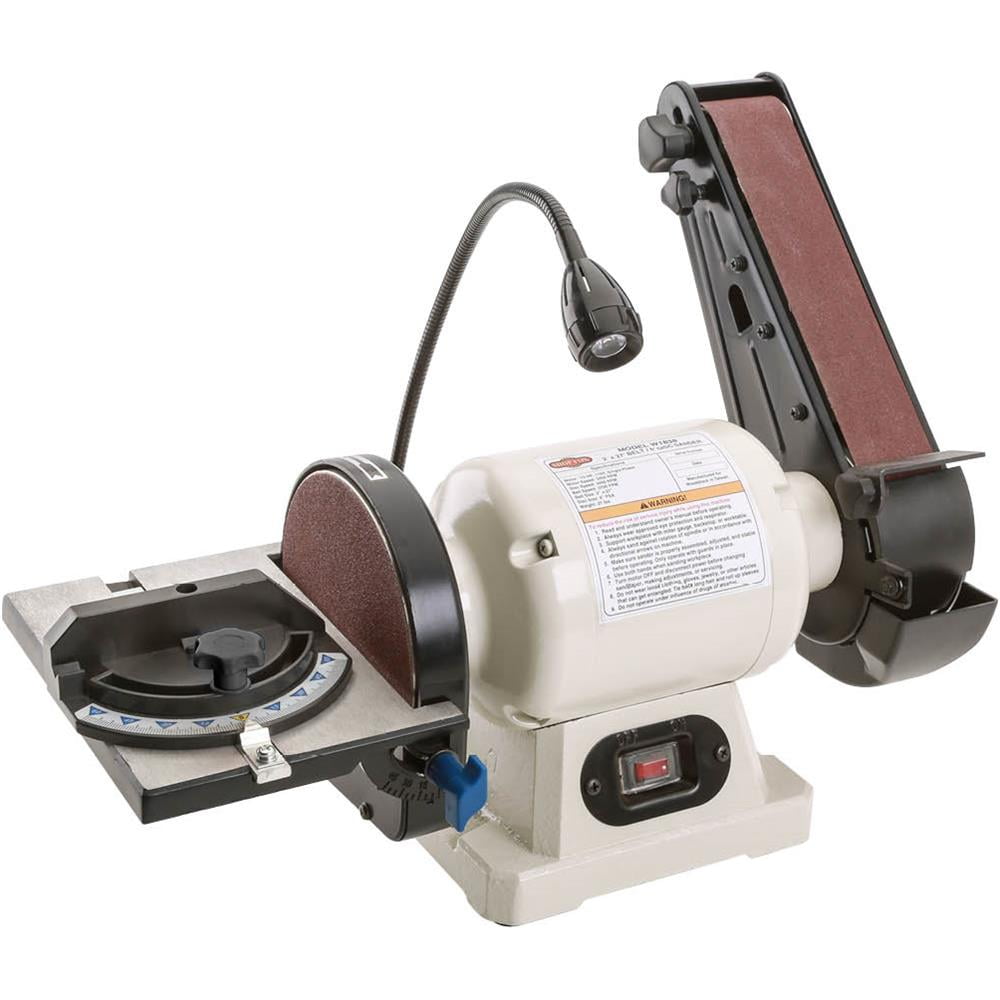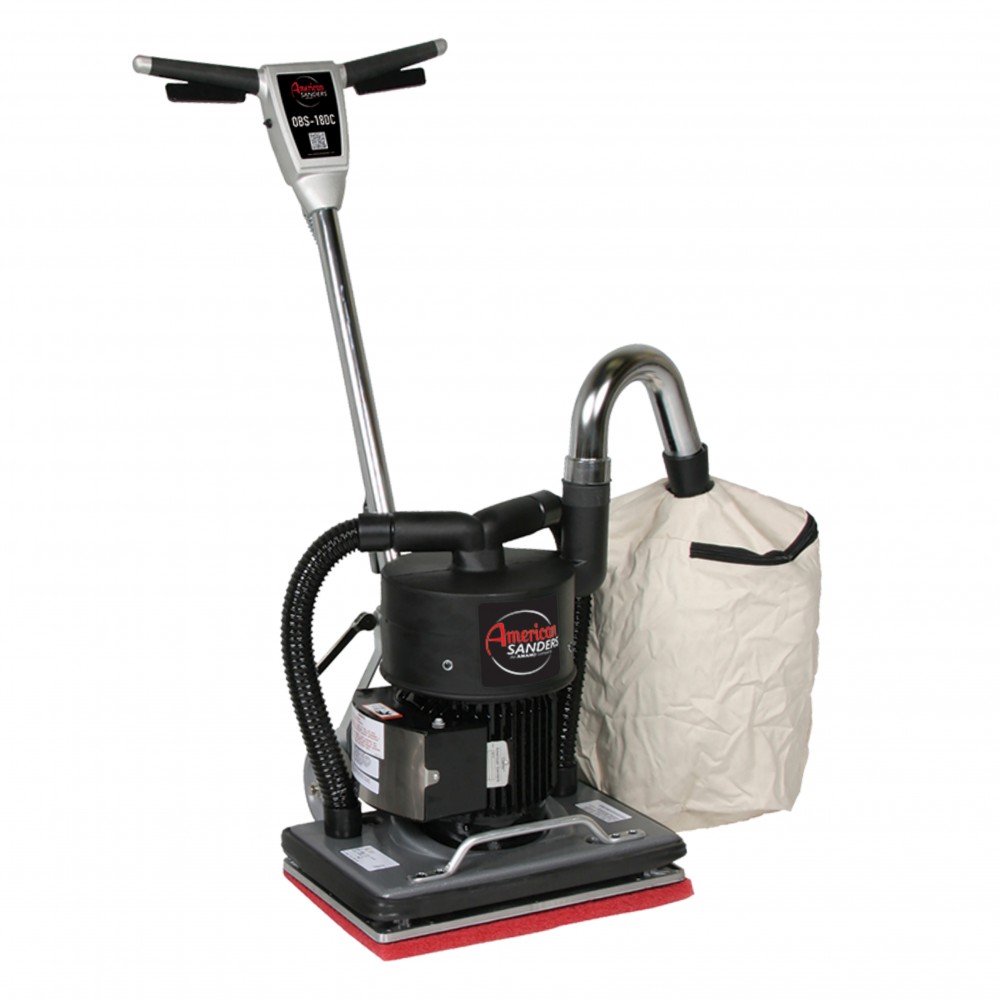You’ve finally decided to tackle that long-overdue floor refinishing project. But standing before you at the hardware store is a daunting array of sanding equipment, each with its own unique shape, size, and purpose. Two of the most popular choices for sanding floors are belt sanders and orbital sanders. While both are designed to smooth and even out wood surfaces, they differ significantly in their approach, making each suited for different tasks and skill levels. Choosing the right tool can make all the difference in achieving a stunningly beautiful floor that will last for years to come.

Image: www.walmart.com
This article will delve into the world of belt sanders and orbital sanders, providing you with a comprehensive understanding of each tool’s strengths and limitations. We’ll examine their design, performance, and best applications, helping you determine which sander is the best fit for your specific project. Get ready to equip yourself with the knowledge you need to choose the right tool and confidently embark on your floor refinishing adventure.
Understanding the Belt Sander
Imagine a powerful engine driving a continuous loop of sandpaper, and that’s essentially what you have with a belt sander. It’s a straightforward, efficient machine designed to tackle large areas quickly and aggressively. The belt sander’s heart lies in its rectangular belt, which spins around two rollers at high speeds. The grit of the sandpaper on the belt directly determines the level of material removal, making it ideal for heavy-duty tasks like stripping away old finishes, removing scratches, and leveling uneven surfaces.
Key Features of a Belt Sander:
- Powerful Motor: Capable of removing a significant amount of material quickly.
- Sanding Belt: Continuous loop of abrasive material for efficient removal.
- Adjustable Sanding Pressure: Allows for control over material removal rate.
- Dust Collection System: Reduces dust and improves air quality.
Advantages of a Belt Sander:
- High Material Removal Rate: For efficient stripping and leveling.
- Speed and Efficiency: Can quickly cover large areas.
- Cost-Effective: Generally more affordable than orbital sanders.

Image: toolrentaldepot.com
Disadvantages of a Belt Sander:
- Risk of Wood Removal: Can easily remove too much material if not used carefully.
- Difficult to Control: Requires skill to prevent uneven sanding.
- Limited for Fine Sanding: Not ideal for detailed or delicate work.
Unveiling the Orbital Sander
In contrast to the linear motion of a belt sander, the orbital sander adopts a random, circular motion to achieve a smoother, more even finish. It resembles a small, handheld power tool with a rotating pad that moves in a slightly wobbly, elliptical pattern. This unique design offers a more controlled sanding experience, making it ideal for both initial rough sanding and final refining stages.
Key Features of an Orbital Sander:
- Random Orbit Pattern: Creates a smoother, more uniform finish.
- Adjustable Speed: Allows for customization based on material and sanding needs.
- Variety of Sanding Pads: Offers flexibility for different tasks and surface textures.
- Dust Collection System: Reduces dust and improves air quality.
Advantages of an Orbital Sander:
- Controllable Sanding: Reduces the risk of over-sanding and uneven surfaces.
- Smooth Finish: The random orbit pattern eliminates swirl marks for a more uniform look.
- Versatile: Suitable for both rough and fine sanding operations.
Disadvantages of an Orbital Sander:
- Slower Material Removal Rate: Takes longer to remove large amounts of material.
- Less Powerful: May struggle with removing thick coatings or deeply ingrained scratches.
- Potentially More Expensive: May cost more than a belt sander.
Choosing the Right Tool for Your Floor
Now that we’ve explored the key characteristics of both belt sanders and orbital sanders, let’s determine which one is the best fit for your floor refinishing project.
Choosing a Belt Sander:
- For Heavy-Duty Sanding: If you’re stripping away multiple layers of old finish, removing deep scratches, or leveling out significant unevenness, a belt sander can be your power tool of choice. It can tackle these tasks more efficiently compared to an orbital sander.
- For Larger Areas: If you have a large floor to cover, the belt sander’s speed and efficiency are unmatched. Its wide sanding belt helps you cover significant area quickly, saving you time and effort.
- For Lower Budget: Belt sanders are generally more affordable than their orbital counterparts.
Choosing an Orbital Sander:
- For Smaller Areas: If you are working on a smaller floor or specific sections that require detailed work, the orbital sander’s maneuverability and control make it a better choice.
- For Refinishing Existing Floors: If your existing finish is in good condition and simply needs a touch-up, an orbital sander can provide a smoother, more uniform final sanding.
- For a Professional-Looking Finish: Orbital sanders are preferred for achieving a smooth, even finish without the swirl marks that can appear with belt sanders. For those who want a flawless look, an orbital sander is the way to go.
Beyond the Basics: Other Relevant Factors to Consider
The choice between a belt sander or an orbital sander might seem straightforward, but several additional factors can influence your decision:
- Skill Level: Belt sanders require a bit more skill and experience to avoid over-sanding and unevenness. If you’re a beginner, an orbital sander might be a more user-friendly option.
- Dust Collection: Both types of sanders generate significant dust. Investing in a high-quality dust collection system is crucial for maintaining healthy air quality and keeping your space clean.
- Sandpaper Compatibility: Ensure you choose a sander with sandpaper that is compatible with your project. Check the specifications of the sander and the sandpaper you intend to use before purchasing.
- Safety Precautions: Both belt sanders and orbital sanders are capable of causing serious injuries if not used properly. Always wear eye protection, a dust mask, and hearing protection. Follow the manufacturer’s instructions carefully and never operate the sander on uneven surfaces.
Belt Sander Or Orbital Sander For Floor
Conclusion
Choosing between a belt sander and an orbital sander for your floor refinishing project boils down to your specific needs, skill level, and budget. For those who want to tackle large areas quickly and effectively, a belt sander might be the best option. However, for those seeking a smoother, more refined finish, or who prefer a more controlled sanding experience, an orbital sander will provide superior results. Whichever tool you choose, always remember to prioritize safety, follow the manufacturer’s instructions, and take your time to achieve a beautiful, long-lasting floor.






